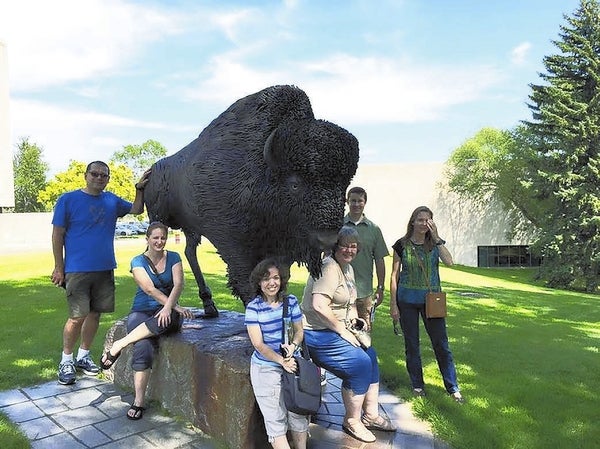Catawba professors connect chemistry and art
Published 12:10 am Thursday, July 30, 2015

- Submitted photo Educators at the North Dakota conference.
Dr. Carol Anne Miderski and Professor Ashley Pierce of Catawba College attended a workshop recently at Bismarck State College in Bismarck, North Dakota.
Bismarck is the capitol of North Dakota and Bismarck State College has grown by leaps and bounds in the past five years, allowing ample classroom space and chemistry lab accommodations for a variety of workshop participants. Participants included organic chemists, inorganic chemists, physics professors, two analytical chemists, a printmaker, an art historian and three general art professors.
The workshop was made possible through Chemistry Collaborations, Workshops and Communities of Scholars, otherwise known as CCWCS, as well as through a National Science Foundation grant. CCWCS workshops are offered throughout the nation on a variety of niche chemistry topics.
The workshop included lots of hands-on activities applicable to Catawba students of chemistry and visual art. This fulfills one aim of CCWCS workshops, which is to provide participants with perspectives and content available for incorporation into teaching at the undergraduate level. Miderski and Pierce will be doing just that as they plan and execute a chemistry and art honors program course available to Catawba College students in the spring semester of the coming 2015-16 academic year.
Upon returning from the workshop, Pierce stated that she “appreciated the range of teaching styles within a wide variety of highly specific areas of expertise. Continuing education for educators is, I believe, among the very best investments, as it is an investment not just in the individual but also in many future generations of students and citizens. I dearly hope that educational opportunities of this sort can continue to be made available for myself and others in the future. The workshop was rigorous but helpful and information-dense.”
She also expressed appreciation for course instructors Pat Hill of Millersville University and Deb Simon of Whitman College, as well as lecturer Erich Uffelman of Washington and Lee for much behind-the-scenes planning, study and preparation. As an educator, she spoke to appreciating what goes into teaching specifically with a hands-on approach or lab component.
Miderski seemed to share in her sentiments, saying, “It was wonderful to have an opportunity to network with artists and scientists to share teaching methods and see how modern technologies can help us to learn about making, examining and preserving works of art.”
The aesthetic alchemy honors course Miderski and Pierce are creating will explore the connection between chemistry and art with a focus on the tactile arts of the American Southwest. They will incorporate chemistry in context throughout course lecture and discussion, as well as through the hands-on lab sections of the course. They plan to incorporate workshop materials directly and indirectly as they continue developing and refining the course over the coming months.
Future courses through CCWCS and the National Science foundation available to those teaching at the undergraduate level include: Genetics and Molecular Biology, Active Learning in Organic Chemistry, Materials Science and Nanotechnology, and more.
Catawba students of the aesthetic alchemy honors course will also present finished projects for public viewing in an art exhibition toward the close of the 2015-16 spring semester.



